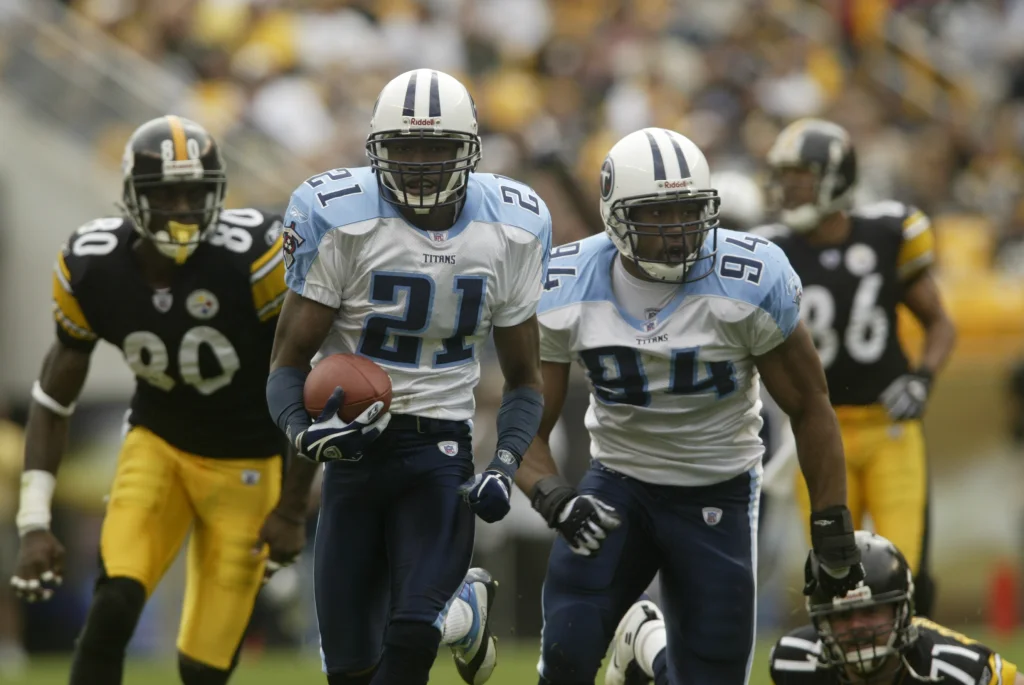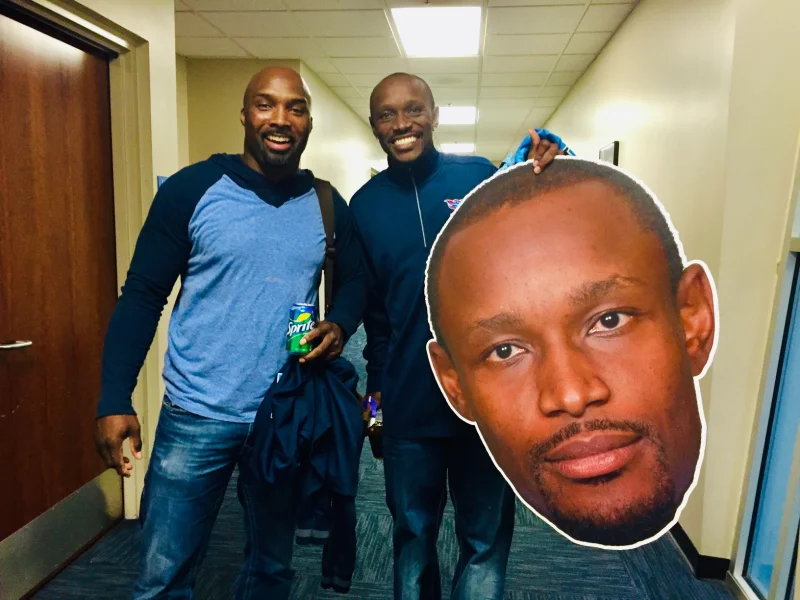NASHVILLE, Tenn. – Every rating that tries to put a number on a season or a career is imperfect.
In a game where it’s easy to compare numbers by position, it’s much harder to measure everyone against each other. How did the left tackle’s solid season weigh compared to the receiver? The interior defensive lineman to the quarterback?
There are unsolvable debates, widely debated.

Pro Football Reference, a site many of us visit frequently, uses a number to help measure things: approximate value.
As I recently considered Eric Allen’s Hall of Fame case, I was fishing there to see where his best seasons rated. And I stumbled onto the best individual season by a member of the Titans/ Oilers since 1960.
It's surprising.
LaDainian Tomlinson’s 2006 season for the Chargers is the standard-setter, with an approximate value of 26. Three players recorded 25s: Marshall Faulk in 1999 for the Rams, Lamar Jackson in 2019 for the Ravens and OJ Simpson in 1975 for the Bills.
For Titans, I imagined Derrick Henry’s 2020 season with 2,027 rushing yards or Chris Johnson’s 2009 year with 2,006 would rank best, or perhaps Steve McNair’s co-MVP 2003 campaign.
CJ2K is on the list of players to post an AV of 18 in a season, but he’s only the fourth-best Titan. Henry’s offensive player of the year campaign was just a 16, the same as the season he just had for Baltimore. McNair’s MVP year was a 14, and he had three other seasons that were 15s.

It’s Samari Rolle’s 2000 campaign that’s the best for a Tennessee player on this list, scoring a 22. Nine teams have never had a player hit that mark, which qualifies as one of the 39 best seasons in the NFL since 1960.
“The simplest explanation involves noting that the 2000 Titans' defense is one of the better defenses in modern history and so there’s a lot of value to be spread around amongst those players,” said Mike Lynch, executive director of data for Sports Reference. “Additionally he had great statistics, was named a Pro Bowler and First Team All-Pro.”
Rolle had no idea that season stood out so well in this metric.
“Oh wow,” Rolle said, as I read off other guys in the group tied for 24th place, including Jim Brown, Marshall Faulk twice, Orlando Pace, Darrelle Revis and three different Steve Young seasons. “That’s amazing. That is amazing. 2000, that is quote-unquote my one great year, but I feel like we had such a great team in 2000. It was almost like you just do what you’re supposed to do. It was crazy.
“And it still hurts that that team didn’t win the Super Bowl.”
In 16 games, Rolle had seven interceptions that season, one for a dazzling 81-yard touchdown return as time expired on the first half at FedEx Field against Washington and another with his hero, Deion Sanders, the intended target in desperation time at the end of that Titans’ win.
The two players both went to Florida State.
“I just lifted him up and I gave him a look and I was like, ‘Thank you,’” Rolle remembered. “After the game he told me he was proud of me. That was it.”
Roole also recovered a fumble and recorded 1.5 sacks, helping earn him First-Team All Pro and Pro Bowl honors.
He rates a pick against Jimmy Smith in Jacksonville on a post route in zero coverage as his second-best interception of that season.
“I remember (cornerback coach) Jerry Gray saying, ‘Press-bail, press-bail,’” he said. “You’re not supposed to do that in zero. But listen to Jerry. He knew.”
Rolle does even think of 2000 as his best season.
“I think 03, 03 or 02,” he said. “I just got to concentrate on covering those years. 2001, that was the last season where Jeff Fisher let me play nickel when teams went three wide. He was like, ‘That’s it, we’re paying you to cover. Just concentrate on covering.”
As for the big offensive seasons of Henry and McNair…
“Henry played on an offense where the passing game was also great, so Ryan Tannehill (16) and AJ Brown (13) got plenty of AV," Lynch said. “The McNair and Henry offenses were very good, but not elite in the way the 2000 defense was. The Chris Johnson offense was pretty average.
“In Rolle’s case, it’s the fact that he was the statistical standout on a historically special defense. It’s harder to assign credit for defense, obviously, but he gets a whole lot of credit.”
![]() Rolle, always upbeat, said he recalls hearing about the AV number but had never seen it or known the details. Clearly, he approves of the metric.
Rolle, always upbeat, said he recalls hearing about the AV number but had never seen it or known the details. Clearly, he approves of the metric.
He would have liked to have played today when so much more information is available about coverage snaps, passer rating when targeted and more.
"I've seen this little thing where you can see a corner's percentage coverage-wise," he said. "I do wish they had that when I was playing."
I told Rolle two of the three other three Titans seasons on the list of best single-season AVs were defensive players. He guessed Jevon Kearse in 1999, a 17. But when I told him they were a linebacker and a corner, he nailed his teammate Randall Godfrey from 2000 and Cortland Finnegan.
The other best approximate value seasons for the Titans:
Cortland Finnegan, 2008, 20: 15 starts, five interceptions, one for a touchdown, a sack and First Team All-Pro.
Randall Godfrey, 2000, 20: 16 starts, two interceptions, one for a TD, one fumble recovery, three sacks, 121 tackles (which count for front seven players), Second Team All-Pro.
Chris Johnson, 2009, 18: 16 starts, 2,006 rushing yards. Influenced by points per drive vs. league average, league yards per rush by RB average, rushing yards as a percent of team total.